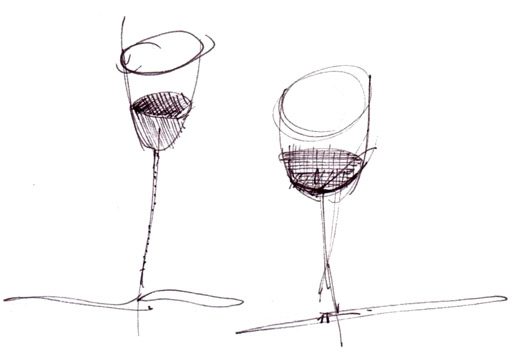
Question to noted wine expert: “Ever mistaken Burgundy for Bordeaux?”
Expert’s answer: “Not since lunch.”
Along with Champagne, Bordeaux and Burgundy may be the most well-known words in the wine world. Even people with no wine experience at all know these names and with good reason. Each began its wine-obsessed life shortly after the Roman conquest of what is today France; each is mainly famous for its red wine; each is a prime object of interest to connoisseurs and collectors.
It’s nice to know your Burgundy from your Bordeaux, but it is even better to understand that these two famous regions take quite different approaches to the question of how good wine should be made. They serve as models for two different approaches to winemaking wherever in the world it’s undertaken.
From the beginning, Bordeaux, sited along the French Atlantic coast within easy seagoing reach of lucrative English markets, took an aggressively commercial approach to the making and marketing of wine. Anglo merchants set up on the Bordeaux wharves where they could collect the wine they bought from smallholders in the high country upriver, quickly blend it into the generic light-bodied red wine the British knew as claret (better not to inquire too closely into their technique), barrel it up, and ship it in the nick of time for Christmas.
Branded wine got its start here, with merchants blending wine from many subregions, vineyards, and even vintages, into a single wine identified with the broker’s name. Where the wine was sourced was not initially a matter of interest to anyone except the brokers themselves. We have no record of famous cru vineyards from the era. The aim was to make wine in a recognizable house style, as consistent from year to year as artful blending could achieve, while maintaining opacity with respect to sources.
Meanwhile, in Burgundy, a culture of wine was taking shape that was at odds with the Bordeaux model. Here, vineyards had been established under the auspices of religious houses whose monk inmates were under an obligation to offer up to God not just their prayers but also their labor. The Church’s approach was what we would today call vertical integration: It owned the vineyards, put up the wine, and made big capital investments in research, infrastructure, and quality control. It kept careful records, had a long institutional memory, and enjoyed a loyal, wealthy clientele.
Burgundy and Bordeaux serve as models for two different approaches to winemaking wherever in the world it’s undertaken.
By the High Middle Ages, the Cote d’Or, Burgundy’s acknowledged sweet spot, had been thoroughly mapped and the individual sites we still know as grand crus were identified. These are discrete, named plots each of which is known to impart a distinctive character to wine made from its grapes, a profile so distinctive that it seemed a pity to dilute its personality with other varietals or with grapes from other plots.
In theory at least, the sources of fruit for the better sort of Burgundy were transparent to purchasers because the vineyards were identified on the label. Today we would call these wines vins de terroir—wines with a sense of place.
Bordeaux’s path to greatness lay in an almost diametrically opposed direction. There, red wine is always a blend with either cabernet sauvignon or merlot playing a leading role and cabernet franc, malbec, and petit verdot in the supporting cast. It is the estate, rather than any single vineyard, which is considered primary. Only insiders know the details of how the wine is put together and they’re not talking.
The picture I’ve sketched is simpler and tidier than reality, but it will have to serve. The point is that today history presents us with a matched set of points of view that between them bookend the world of wine as we know it. On the one hand, production that strives to produce an appealing, drinkable, stylistically consistent wine from year to year despite the vagaries of weather, yield, disease, and vine age; on the other, an approach that glories in particularity, diversity, variability, and the nuanced differences apparent only to experts.
It’s no accident that it’s the Bordeaux pole that larger-scale, more commercially oriented producers are attracted to. After all, consistency is the very hallmark of the branded product whether we’re talking peanut butter or Pinot Grigio. In the same way, it makes sense that smallholders and artisanal producers want to put the focus on their strong suits: individuation, a nontechnical approach, family ownership, a instinctive distaste for anything corporate.
A preference for Bordeaux over Burgundy (or vice versa) doesn’t just reflect a taste in wine. In my experience, it says something about an individual’s whole approach to life—a bit like the way that the choice of a Mac or PC operating system draws a line between creatives and business types.
Given all the differences, is it really possible to confuse one with the other? In my own experience, it’s much more likely to happen if the wines in question have some bottle age on them – age tending to flatten the varietal and regional distinctions between quality red wines in ways that can be alarmingly destructive of a wine taster’s self-esteem.
Reading this may not help you when it comes to infallibly knowing your Bordeaux from your Burgundy—but if you’re ever asked the question at least you’ll have plenty to say about it.
Reach me at stephenmeuse@icloud.com
First published on the America’s Test Kitchen blog, The Feed.